In the mid-to-late 1980s, videowalls became an increasingly popular means of video display. Nam June Paik made Video Flag X in 1985:
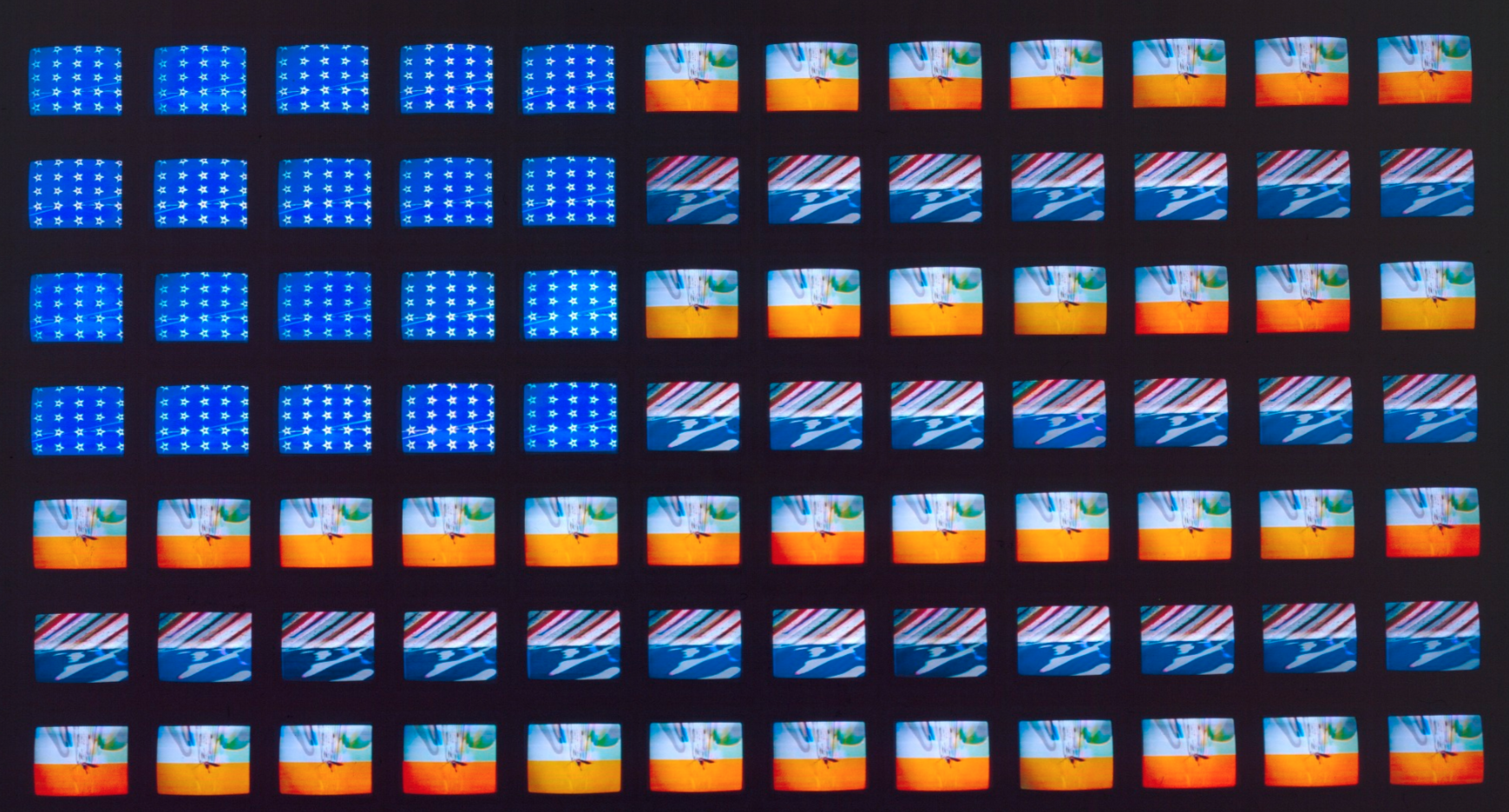
Nam June Paik, Video Flag x (1985), 84 10-inch television sets, videotapes, Plexiglas and 3 LaserDiscs, Detroit Institute of Arts
…and other video walls were popping up in department stores and theme parks, Broadway musicals, and Whitney Houston’s Diet Coke ads:
I asked Birnbaum where she got the idea to utilize a videowall.
Her inspiration came from clubbing in New York City. Specifically, she got the idea from seeing the enormous video displays at the Palladium, from the VJ booths at Hurrah’s and the Peppermint Lounge, the video lounge at Danceteria, and the informal video salons held in the front room of the Mudd Clubb. These were places and spaces where Wall Streeters and gallerists, curators and punks, queer and straight, black and white and Latinx, all came together to dance, party, and be seen.
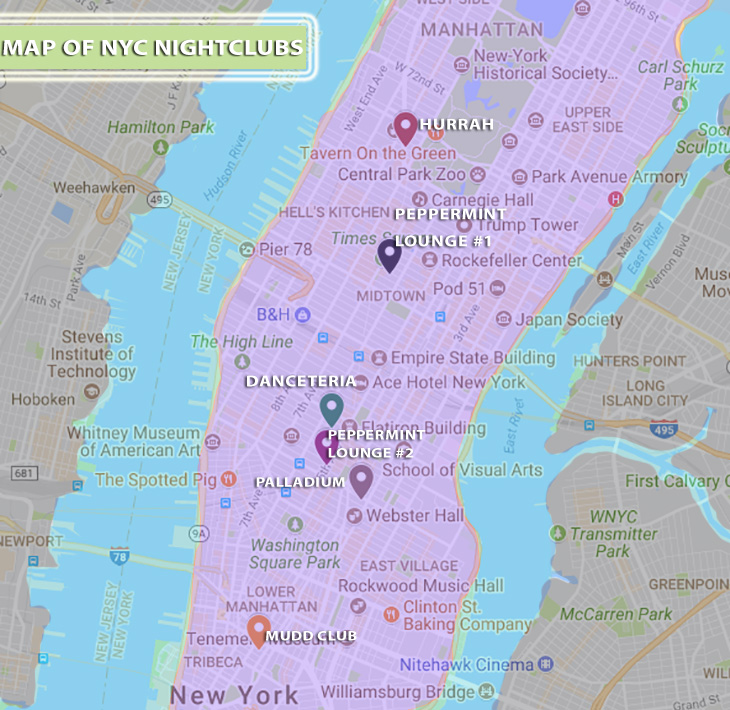
Map overlay of NYC nightclubs by Kathryn Studuhar
These were the sites that saw the debut of work by, among others, Paik, Dean Winkler, John Sanborn, Pat Ivers and Emily Armstrong, Maureen Nappi, Merrill Aldighieri, and others. As I began interviewing Dara and her contemporaries, many of whom VJ’ed or programed video in these very clubs, I came to realize that a tremendous amount of video art was being produced at the clubs , in parallel with, but also in contradistinction to, the work that was being exhibited in galleries and museums. In other words, there is a whole history of video art that has thus far escaped inscription into the annals of art history, and it’s a history of both technological scarcity (no one owned video editing equipment) and abundance (the clubs did, and had the requisite displays to showcase it); it’s a history that limns the parallel developments of music video, which had a place of privilege in the clubs, and video art; it’s a history of live moving image performance, as well as an unexamined wellspring of contemporary remix culture; and it’s a combined social and labor history of how artists shared resources, shared work, developed their craft, and spent their time together.
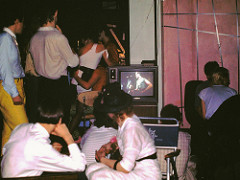
The video lounge at Danceteria.
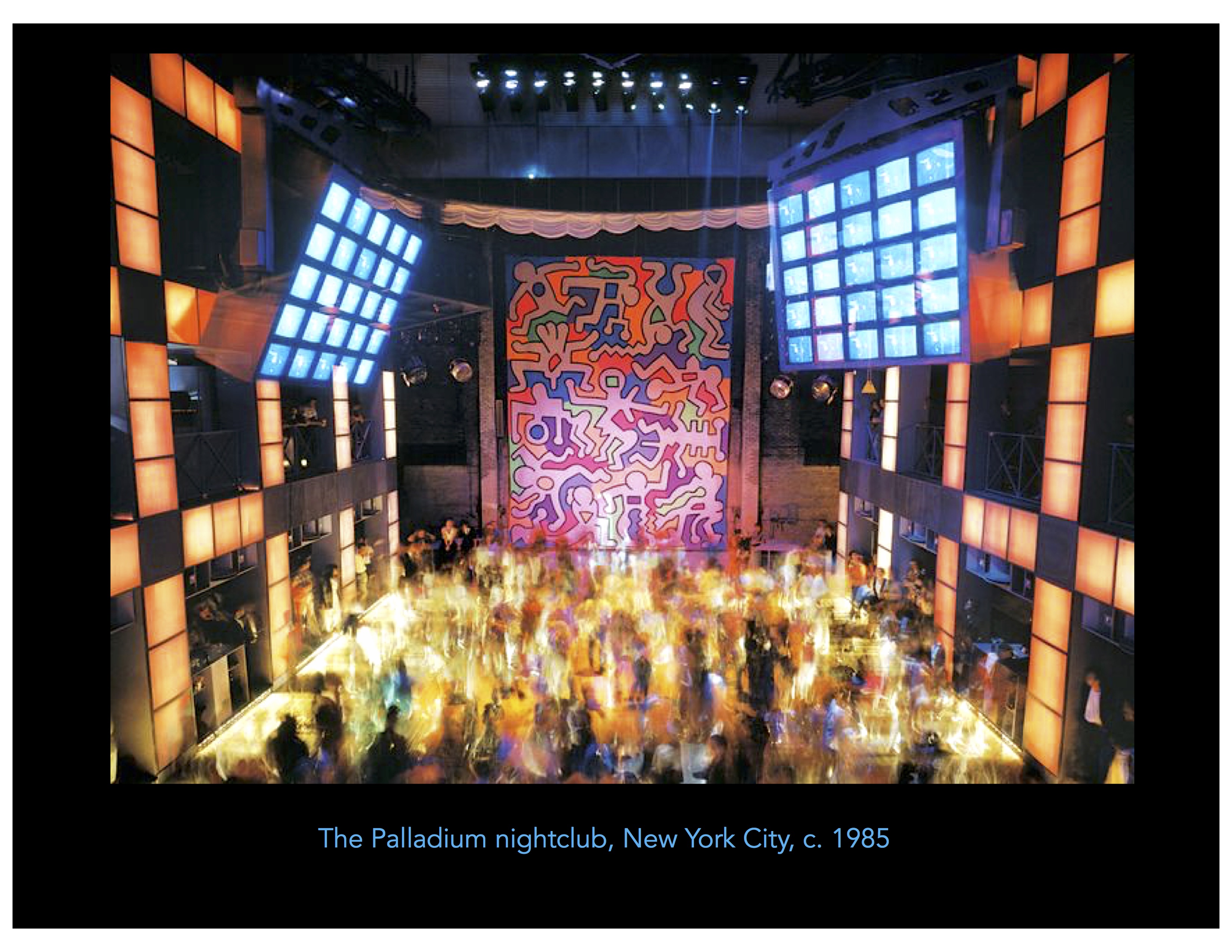
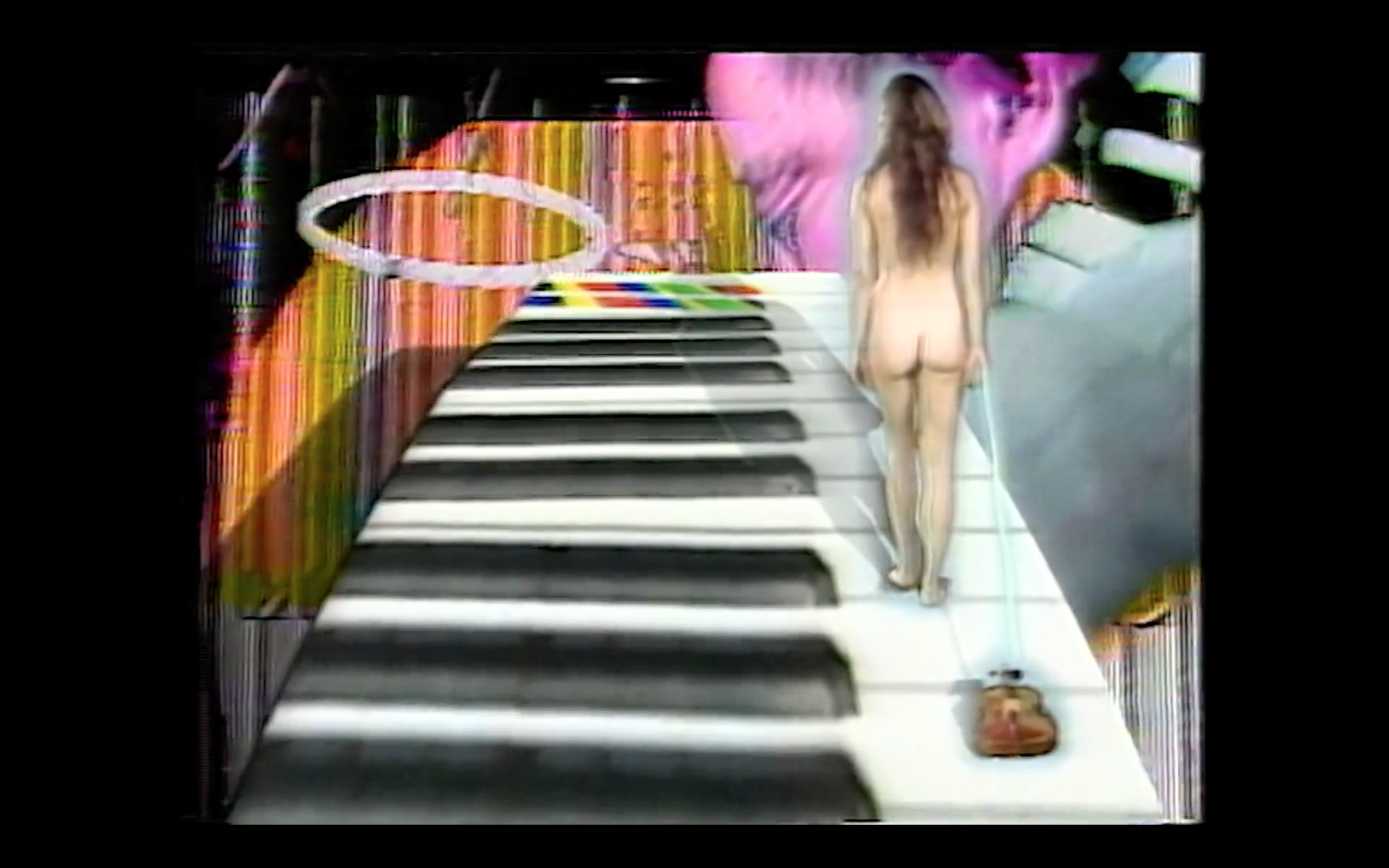
Image from Majorca—fantasia (Nam June Paik in collaboration with Paul Garrin and Amy Greenfield, 1989), single-channel video.
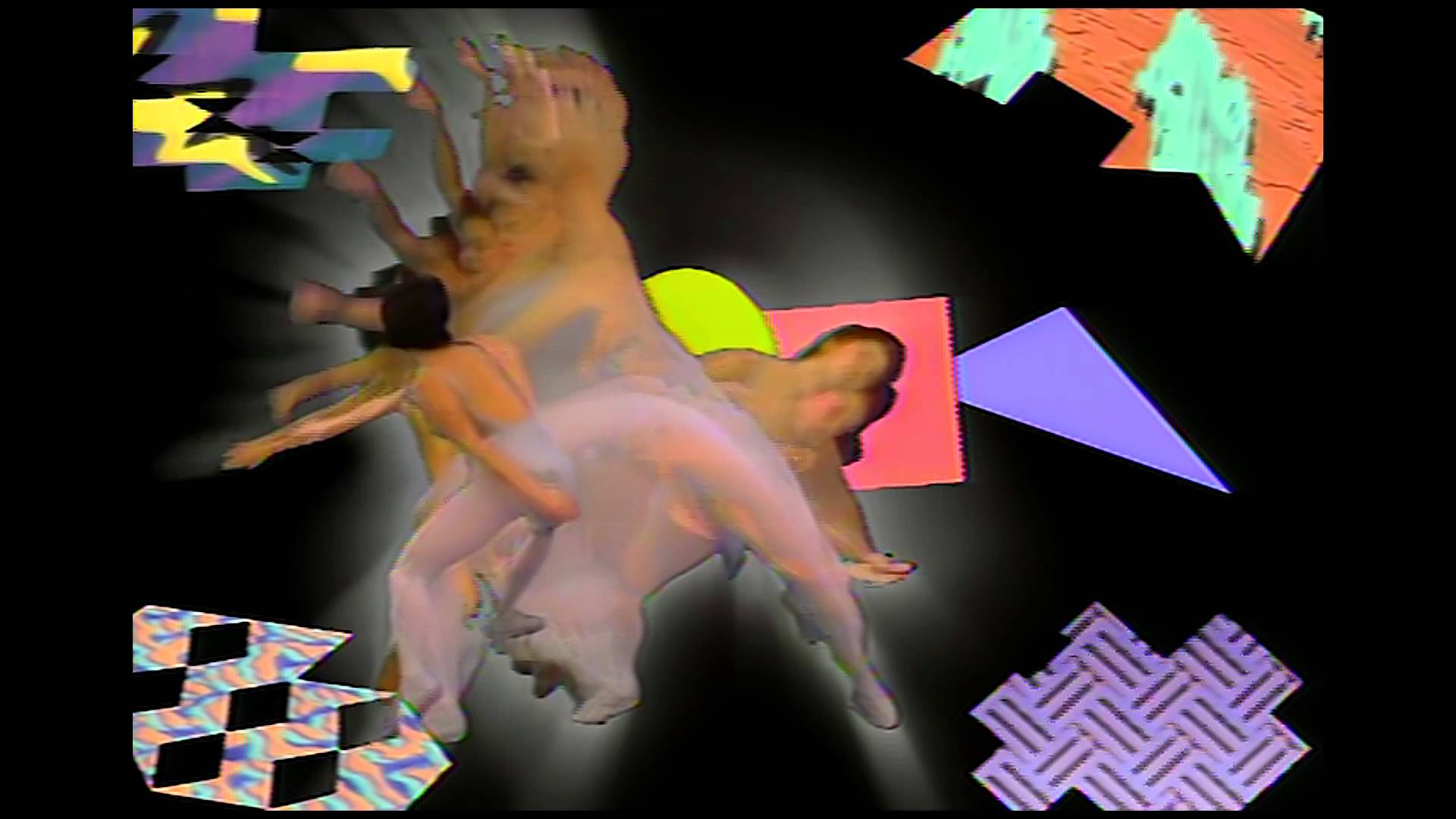
Luminare (John Sanborn and Dean Winkler, 1986), single-channel video.
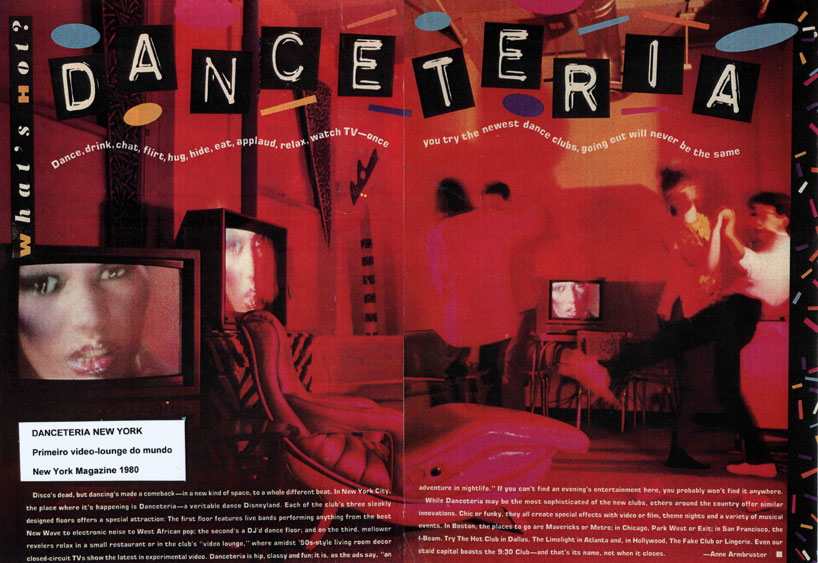
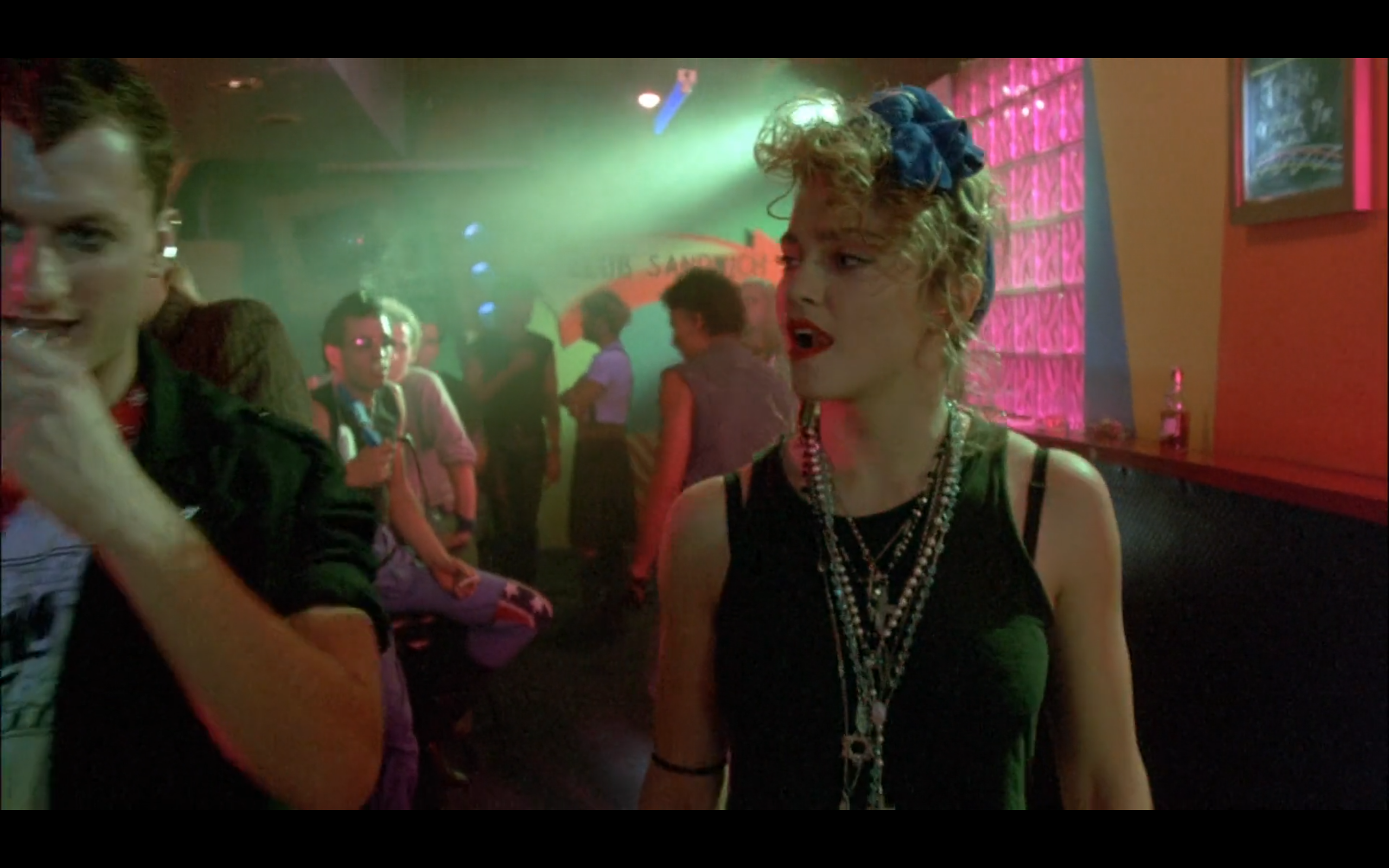
The Danceteria video lounge in Desperately Seeking Susan (Susan Seidelman,1985).
